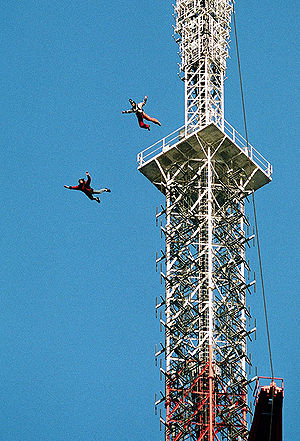Gerald Fusil is a man who always puts his ideas into action and others follow. The founder of the Raid Gauloises, The world’s first true expedition race is always on the lookout to expand the sport. The cost of competing in adventure racing has reached a level that few teams can now afford. Organisers and adventure racers are faced with high travel and insurance costs. One way to attract racers is to offer large sums in prize money, and top teams can make a living, but what about the average racer.
Last Year, During the annual Reunion D’Aventures race, Gerard Fusil added a bike and run discipline which required the four person team to share two mountain bikes during a couple of legs of the race. The trial was a success as teams were forced to think of tactics to complete the legs in the fastest possible way. Some teams doubled up on the downhill sections, others stayed, whilst the more successful set up a relay system with the rider going a set distance before leaving the bike at the edge of the track for their team mate, who would get on and then leapfrog them.
Gerard Fusil saw an opportunity to return once again to the basis of Expedition Adventure Racing. Providing teams the chance to explore a country, interface with the local population and race in exotic locations with out the need to transport large amounts of gear. Gerard Fusil announced his ideas at the Reunion D’Aventures prize giving and the world waited with bated breadth.
September 2005 saw Gerard Fusil Launch the Bike and Run Concept to the World with the Oman Adventure. Details were brief, two person teams to share one bike with only one person to be on the bike at one time. The race would be run in a number of stages including a night stage and teams had to be prepared to camp in the wild. Time was short so Gerard Fusil used the course notes from the 1992 Raid Gauloises for parts of the course.
Gerald Fusil made one other departure from the norm by pre-announcing the lengths of each stay and the names of the overnight camps. The race was to take place on the East Coast of Oman, however some of the place names were only known to the locals.
December 2005. A barmy evening camped by the sea saw Gerard Fusil briefing the gathered teams from France, Oman, UK, Réunion, Austria, Holland and Australia. Most teams had arrived in the morning so had little time to prepare. Support vehicles were shared by two teams, so competitors spent the night poring over maps and packing gear into the vehicles by torchlight.
The following day at dawn a convoy of vehicles transported the team to the start line in a nearby Wadi. The first day included a section of running only along goat tracks and this proved to be decisive as the Australian and one local Omani team got lost allowing a French team to build an unassailable lead.
Later in the week Gerard Fusil had mapped out the course with a 17k twisting climb from the sea to 1500 metres and also a section of canyoning with a number of swims.
Gerard Fusil had arranged camping or bivouacs in a number of scenic areas, with the stages starting in the early morning most teams would finish around mid-day or early afternoon.
The terrain in Oman is varied from lush oasis to harsh rocky hillsides and of course seas of sandiness where the teams finished the race. Gerard Fusil held the prize giving in Muscat the winners being a husband and wife team Wilsa Sport Helly Hansen from France. Second place went to the Australians and a Local Omani team came in third.
Teams came from many different backgrounds, Adventure racers, tri-athletes, marathon runners, mountain bikers; the final count saw adventure racers however leading the way.
Virtually all teams adopted the general tactic of leap frogging, however there were at least a couple of incidents when teams missed the bike, including one on the long climb for an all female team which required an extra 4k to be covered to collect the bike!
The Inaugural race proved to be a success and now Gerald Fusil has announced the second race of the series which will return to a different area of Oman at the end of November.







